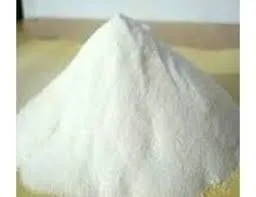
डिस . 26, 2024 06:28 Back to list
Influence of Hydroxyethyl Cellulose Concentration on Viscosity Characteristics and Applications
Understanding Hydroxyethyl Cellulose Viscosity and Concentration
Hydroxyethyl cellulose (HEC) is a versatile non-ionic cellulose ether that has gained substantial attention across various industries due to its unique properties. Widely used as a thickening agent, stabilizer, and film-forming agent, HEC finds applications in sectors such as pharmaceuticals, cosmetics, construction, and food processing. One of the most critical characteristics of HEC is its viscosity, which directly correlates with its concentration in a solution. Understanding the relationship between hydroxyethyl cellulose's viscosity and concentration is essential for its effective application.
The Nature of Hydroxyethyl Cellulose
HEC is derived from cellulose, a natural polymer abundant in plant cell walls. It is modified through a chemical reaction with ethylene oxide, which introduces hydroxyethyl groups into the cellulose structure. This modification enhances the solubility of cellulose in water and allows it to function effectively as a thickening agent. The degree of substitution, which indicates how many hydroxyl groups are replaced by hydroxyethyl groups, can impact the properties of HEC, including its viscosity.
Viscosity A Key Property
Viscosity is a measure of a fluid's resistance to flow. In the context of HEC, viscosity depends significantly on the concentration of the polymer in solution. As the concentration of HEC increases, the viscosity of the solution typically increases as well. This behavior can be attributed to the interaction between HEC molecules. At higher concentrations, the molecules are more closely packed, leading to greater resistance to flow.
Viscosity is crucial for many applications. For instance, in the pharmaceutical industry, high viscosity solutions can improve the stability of active ingredients, while in cosmetics, viscosity affects the application and feel of lotions and creams. Understanding the viscosity of HEC solutions is vital for formulating products that meet specific performance criteria.
The Relationship Between Concentration and Viscosity
The relationship between hydroxyethyl cellulose concentration and viscosity can be analyzed using mathematical models. The most common relationship is described by the power-law model, where viscosity is expressed as a function of shear rate and concentration. Generally, as the concentration increases, the apparent viscosity also increases, but the rate of increase can vary depending on factors such as the shear rate and temperature.
hydroxyethyl cellulose viscosity concentration

In practical terms, a low concentration of HEC may yield a relatively low viscosity solution, suitable for products that require a thinner consistency, such as some paints or light lotions. Conversely, higher concentrations are used for products needing a thicker texture, such as gels or pastes.
Factors Influencing Viscosity
Several factors influence the viscosity of HEC solutions apart from concentration. Temperature plays a crucial role; as the temperature increases, the viscosity typically decreases due to reduced molecular interactions. Similarly, the presence of other solutes or additives can significantly affect viscosity. For example, electrolytes can reduce the viscosity of HEC solutions through a phenomenon known as salting out.
The molecular weight of HEC is another critical factor. Higher molecular weight HEC usually leads to solutions with greater viscosity at comparable concentrations. This trait can be essential when selecting HEC for specific applications, as higher molecular weight forms often provide enhanced thickening properties.
Practical Applications of Viscosity Measurements
In formulation development, determining the viscosity of HEC solutions at various concentrations is vital for ensuring product efficacy and user satisfaction. For example, in the food industry, viscosity measurements help ensure that sauces and dressings have the desirable mouthfeel and stability. In construction, HEC can be used in mortars and adhesives to enhance workability and adhesion, with viscosity directly influencing these properties.
Conclusion
Hydroxyethyl cellulose is a critical component in many products across diverse industries, with its viscosity being a key property affected by concentration. As manufacturers and formulators continue to innovate, a thorough understanding of the relationship between HEC concentration and viscosity will be essential for developing effective products that meet consumer needs. As research progresses, the potential applications of HEC will likely expand, highlighting the importance of studying its properties in depth to harness its full capabilities in various fields.
-
tile-bonding-additives-for-stronger-bonds
NewsAug.22,2025
-
construction-grade-rdp-for-wholesale-needs
NewsAug.22,2025
-
trusted-wholesale-hec-partners
NewsAug.22,2025
-
hec-solutions-for-industrial-excellence
NewsAug.22,2025
-
construction-additives-need-hpmc-essentials
NewsAug.22,2025
-
hpmc-versatile-cellulose-ether-for-industries
NewsAug.22,2025







